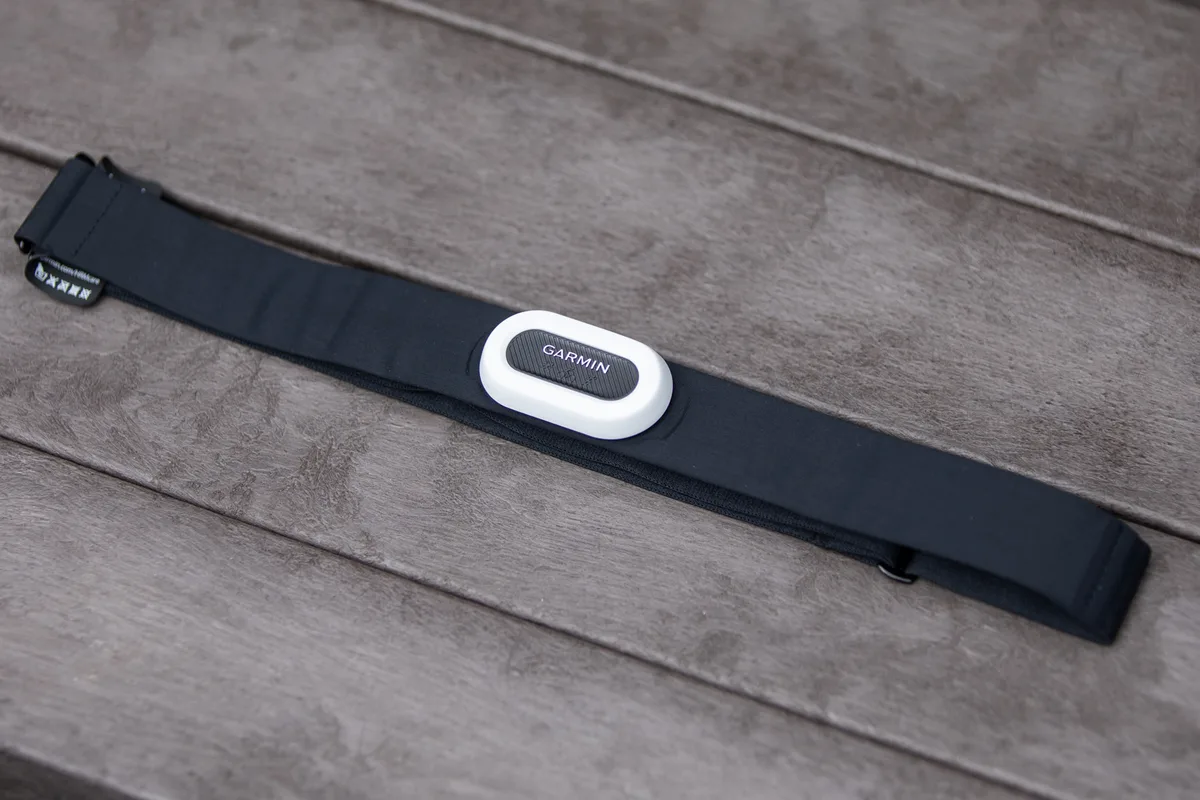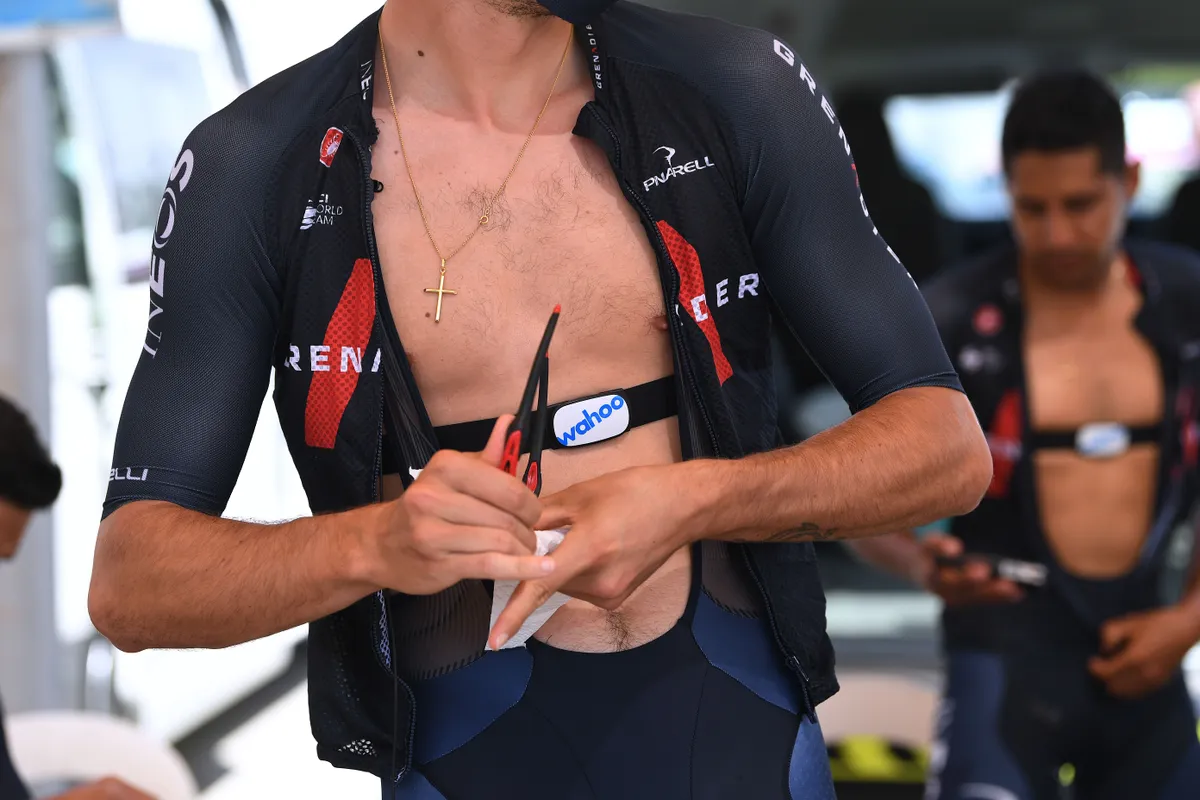The best heart-rate monitors for cycling will give you an accurate reading, no matter how hard you’re working, and whether that’s riding outdoors or indoors on a turbo trainer. We’ve put some of the most popular options to the test to see how well they work and how easy they are to live with.
We’ve focused on chest-strap heart monitors because they’re generally the most accurate. But there’s a huge array of smartwatches that will measure your heart rate optically from your wrist. If you don’t want to buy and wear a heart-rate strap, read our guide to the best cycling watches to help you choose between them.
After putting six of the latest heart-rate monitors through their paces, we concluded that the Polar H10 was the best on test. It's a brilliant heart-rate monitor that warrants the investment. The 4iiii Viiiiva is also a highly recommended option.
Keep reading to see all our heart-rate monitor reviews or jump to our buyer's guide to find out more about heart-rate monitors.
SQUIRREL_PLAYLIST_10169117
Editor's note: This best list was first published on 17 December 2024.
Best heart-rate monitors for cycling
Best on test: Polar H10
SQUIRREL_TEXT_13164416

- £86.50 / $99.90 / €99.90 as tested
- Pros: Extremely comfortable and grippy strap; no apparent accuracy issues; waterproof; stores data; long-lasting battery
- Cons: More expensive than some competitors
The H10 heart-rate monitor lives up to Polar’s prestigious reputation for fitness-tracking devices.
Heart-rate data recording proved accurate and consistent in testing, and the H10 strap is very comfortable and secure.
Most heart-rate monitors are one-size-fits-all, but Polar supplies the H10 in two strap lengths, M-XXL (67-95cm) and XS-S (58-71cm). This should mean more people can find their ideal fit.
The H10 strap closes with a clasp to the side of your rib cage. This system evenly distributes tension and means there’s no central button to dig into your chest bone.
The sensor area is more flexible than most. This further improves comfort because the strap hugs your chest without the need to fasten it too tight. Grippy silicone spots help the strap stay secure when you’re wet and sweaty.
Pairing with a bike computer is rapid. Because it can store workout data, the H10 can also work on its own without a watch, phone or head unit connection.
The H10 uses a coin cell battery to run for up to 400 hours, according to the brand.
The Polar H10 is claimed to be waterproof to 30 metres (WR30), making it (in theory) suitable for deep-water swimming.
Specs
Weight: 61g | Connectivity: ANT+, Bluetooth
SQUIRREL_13164416
Highly commended: 4iiii Viiiiva
SQUIRREL_TEXT_13106208

- £49.99 / $69.99 / €49.99 as tested
- Pros: Impressive spec; pretty comfortable; replaceable strap sold separately; good value
- Cons: Battery life not the longest
The 4iiii Viiiiva is a mid-range heart-rate monitor with a couple of nifty features setting it apart from its competitors, which make it probably the best-value heart-rate monitor available.
Like other cheaper heart-rate monitors, the Viiiiva strap closes with a button to the side of the pod at the front. While not the most comfortable, it wasn’t irritating and didn’t slip during long rides.
There’s a good range of adjustment from the 57-to-132cm (23-52in) strap.
Pairing with a bike computer and data recording generally appeared consistent. Moreover, the Viiiiva can act as a 'Bluetooth bridge' by connecting ANT+ sensors, such as a power meter, to Bluetooth devices, like your phone. But since most modern fitness tech is equipped with both types of connectivity, this feature won’t be that useful for most people.
Unlike other heart-rate monitors in its price category, 4iiii claims the Viiiiva can record and store up to 65 hours of heart-rate data. It will upload to your phone when you reconnect to the proprietary app.
This could be handy if your watch or bike computer runs out of battery, or if you willingly ride without a recording device.
The Viiiiva’s IPX7 water-resistance rating will withstand rain and sweat, but isn’t suitable for swimming.
Specs
Weight: 46g | Connectivity: ANT+, Bluetooth
SQUIRREL_13106208
The competition
Garmin HRM-Pro Plus
SQUIRREL_TEXT_13164418

- £119.99 / $145 / €137 / AU$219 as tested
- Pros: Excellent battery life; reliable data recording; comfortable strap; data storage
- Cons: Expensive; overkill just for cycling
The Garmin HRM-Pro Plus is an impressively comfortable and consistent heart-rate monitor with class-leading battery life. It connects quickly to Garmin smartwatches and bike computers, as well as Wahoo’s.
It’s a great heart-rate monitor for triathletes, but its multisport features, which contribute to its high price, are probably superfluous if you don’t run and swim as well as cycle. For example, the HRM-Pro Plus can record Running Dynamics, such as stride length and cadence. Meanwhile, its 5 ATM water-resistance rating means you can swim with it.
Without a device connection, it can store workout data and upload it to Garmin Connect when it syncs. This could benefit cyclists if your cycling watch or computer dies during a ride, or you choose to leave the device at home.
The HRM-Pro Plus’ supple strap closes at the side with a hook and loop, aiding comfort by keeping the back of the pod free from protrusions. The pod itself integrates into the strap, and you can replace the coin cell battery without a tool.
You shouldn’t have to do this very often – the battery is claimed to last for a year of hourly, daily use.
Garmin says the strap wraps around 64-109cm chests, and up to 142cm with the strap extender, sold separately for £8.99.
Specs
Connectivity: ANT+, Bluetooth | Weight: 56g
SQUIRREL_13164418
Hammerhead Heart Rate Monitor
SQUIRREL_TEXT_13164419

- £49.99 / $63.99 / AU$64 as tested
- Pros: Simple; quite comfortable; waterproof; long battery life
- Cons: Basic features; average-quality strap
The Hammerhead Heart Rate Monitor is reasonably priced and appears to track heart rate reliably, but it’s undermined by a simple, budget strap, which closes with a button to the side of the pod.
As with other heart-rate monitors that attach this way, we found it difficult to securely fit the strap without causing the pod to dig into our chest. Measuring 71 to 122cm, the strap should loop around most chests though.
We didn’t find the strap to be that secure either, and it slipped down a few times in testing. These incidents coincided with the Heart Rate Monitor’s readings clearly not correlating with effort level.
However, when the strap was fitted correctly, we didn’t notice any anomalous heart-rate readings.
Hammerhead claims its coin cell battery will last for an eyebrow-raisingly high 900 hours – that’s more than double the claimed battery life of the Polar H10 and Garmin HRM-Pro Plus.
Although the Heart Rate Monitor is said to be waterproof to a depth of 30 metres, Hammerhead doesn’t recommend it for swimming. Instead, this degree of waterproofing is meant to protect against rain and sweat.
The similarly priced 4iiii Viiiiva can work offline by storing ride data, which the Hammerhead Heart Rate Monitor cannot. However, its claimed battery life is much longer.
Specs
Weight: 48g | Connectivity: ANT+, Bluetooth
SQUIRREL_13164419
Garmin HRM-Dual
SQUIRREL_TEXT_13085176

- £59.99 as tested
- Pros: Accurate and reliable data
- Cons: Not as fleixible as others
The cheapest heart-rate monitor in Garmin’s range offers a pared-back suite of features, without on-device data recording, and with the brand’s own waterproof rating of 1 ATM (enough for cycling, like IPX7).
It promises accurate and reliable data, delivered via ANT+ or Bluetooth, and a battery life of 3.5 years (though I’ve found the CR2032 coin cell batteries only last around a year). The screw- down battery door needs a Torx T5 tool.
This strap connects quickly to bike computers and smartwatches, and has given consistent and reliable heart-rate data. It fits chests from 60cm to 106cm (23.5”to 42”), or up to 142cm (56”) with an optional extender (£8.99).
Not as soft or flexible as some, it needs to be worn quite tightly to hold the sensors in place properly.
Spec
Weight: 56g | Connectivity: ANT+, Bluetooth
SQUIRREL_13085176
Wahoo Trackr
SQUIRREL_TEXT_13086203

- £79.99 / $89.99 / €89.99 as tested
- Pros: Comfortable; light; consistent; rechargeable battery
- Cons: Low water-resistance rating; doesn’t store data; modest battery life; proprietary cable
The Wahoo Trackr feels more premium than the brand’s now-discontinued Tickr X – as it should do at twice the price – but we’re unconvinced it justifies the expenditure when cheaper rivals perform better.
A rechargeable battery sets the Trackr apart from the rest of the heart-rate monitors on test. However, the move away from a coin cell battery is a double-edged sword.
Battery life drops to a meagre 100 hours. The charging cable is proprietary, which could leave you in a pickle if you lose or forget it. Furthermore, the Trackr lacks features that some rival heart-rate monitors deliver.
Wahoo says the 68.5 to 87.6cm strap will stretch around chests up to 127cm in circumference.
Although Wahoo says the Trackr is safe to wear for short swims, it’s not as waterproof as the slightly more expensive Polar H10. In any case, it won’t be able to transmit data as you swim or store it for later, whichever sport you’re doing, unlike the cheaper 4iiii Viiiiva.
On the plus side, we found the Trackr comfortable to wear and noticed no unusual heart-rate readings. Syncing to Wahoo and Garmin bike computers is easy.
If every gram counts, the Trackr is the lightest heart-rate monitor we’ve tested.
Specs
Weight: 41g | Connectivity: ANT+, Bluetooth
SQUIRREL_13086203
What we look for in a heart-rate monitor
First and foremost, a heart-rate monitor needs to fit well, and be comfortable and easily adjustable for different riders. It needs to stay in place while riding.
It also needs to be resistant to sweat and water ingress, so we check the IP rating.
It should be easy to set up and connect to a cycling computer, a smartwatch or a smartphone app such as Strava, as well. It’s hard to find a heart-rate monitor that doesn’t support both ANT+ and BLE connection protocols, but it’s something we check.
Some HRMs have extra functionality, such as store-and-forward capability for data and Garmin’s stride length. They can be nice to have for some users, but aren't necessary for cycling.
Heart-rate monitors weigh next to nothing, so although we’ve quoted weights they're unlikely to be significant. Claimed battery life is usually huge and most HRMs use a CR2032 coin cell, so this is also not a key differentiator.
And finally, affordability is important. There are probably other items higher on most cyclists’ want lists than an expensive heart-rate monitor.
Why you can trust BikeRadar
At BikeRadar, we’re experts on all things cycling-related, with our team of expert testers having extensive experience of reviewing everything from the smallest parts to the most expensive bikes.
We’re out riding year-round and also riding indoors to review the booming market for indoor training. A heart-rate monitor is an essential tool for both, so we know how to choose products for testing and what to look for in the best heart-rate monitors.
Our reviews are never sponsored and always editorially independent.
Buyer’s guide to heart-rate monitors for cycling

Why should I train with a heart-rate monitor?
Using a heart-rate monitor will not only enable you to find your resting and maximum heart-rate, but more crucially set your training zones so you can train with them.
Just like training with different power zones, riding within these different ranges of intensity enables you to build different areas of fitness, whether that's aerobic endurance or upping your sprint's maximum power.
With a comprehensive training plan, you can use these training zones (measured using heart rate, power or even feel, known as 'perceived exertion') to set targets for your rides, intervals or workouts, depending on what you want to achieve.
Learning to ride within these zones as part of an effective plan will not only help you to pace your efforts well, but also reduce the likelihood of overtraining or riding too hard on your recovery rides. You might think this sounds a little counterintuitive, but it's a more common problem than you might think.
Unlike setting a plan based on average speed or duration, the numbers behind your training zones are specific to you, based on your physiology and level of fitness.
What type of heart-rate monitors are there?

There are two main ways to measure your heart rate, as well as multiple places where an HRM can be positioned.
ECG heart-rate sensors measure the electrical impulses that cause the contractions of the heart muscle to determine heart rate (similar to an electrocardiogram in a hospital), and you'll find these sensors in the popular chest-strap options.
On the other hand, optical sensors use LED lights to shine through the skin and measure the variance in blood flow. These are found on wrist-based monitors such as smartwatches and some arm straps such as the Wahoo Tickr Fit.
Even though optical sensors have come on leaps and bounds in recent years, ECG-style monitors are still widely regarded as the most reliable. You can read our detailed piece on smartwatch heart-rate measurement accuracy for an in-depth look.
Heart rate vs power – which is best for training?

The key difference between a HRM and a power meter is that, while a heart-rate monitor gauges your input effort, a power meter measures your output.
While heart-rate monitors tend to be much more affordable than power meters, there are some drawbacks. Your heart rate is also influenced by factors such as sleep, altitude, level of fatigue and caffeine intake, and there is a short lag between increasing or decreasing your level of effort and your heart rate responding and changing accordingly.
On the other hand, power data is much more accurate and specific to your effort, responding simultaneously to any change in intensity. Learning how to train with power can be a little more daunting: there is certainly more data to get your head around. Analysis software such as Training Peaks can help you make sense of the numbers.
Unlike using a power meter, you can use your heart-rate monitor on different bikes easily without having to change out any equipment or go to eye-watering expense. Similarly, you can track your progress across different sport types too.
For example, with a modern digital sports watch, you can track your heart rate for cycling, running, swimming and in the gym, plus even monitor your sleep quality. This helps you gain a much fuller insight into your training and recovery potential.
For the full lowdown, check out our guide to training with heart rate vs training with power.
Data transfer: ANT+, Bluetooth or dual-band
The vast majority of – maybe all – modern heart-rate monitors transmit data using both the ANT+ and BLE protocols. Likewise, unless your cycling computer is very old, it should support both protocols. It’s worth checking, if you’re not sure.
If you’re looking to record and display data on a phone, you’ll usually be restricted to Bluetooth transmission and the same is true of many smartwatches, so again check compatibility.
How should I care for my heart-rate monitor?

Chest straps with detachable sensors are the easiest to clean, while cheaper chest straps with integrated sensors may require more careful cleaning.
Some HRMs are even machine-washable, although you should usually remove the monitor pod from the strap.
If you train using a heart-rate strap very regularly, you might want to consider using a couple of different straps with the same sensor, so you can always have one ready to use even if the other is being cleaned.
Failure to clean your heart-rate chest strap regularly enough can cause skin irritation, not to mention the smell.

